True Signal vs Correlated Null
Lei Sun
2017-03-29
Illustration
n = 1e4
m = 5
set.seed(777)
zmat = matrix(rnorm(n * m, 0, sd = sqrt(2)), nrow = m)library(ashr)
source("../code/ecdfz.R")
res = list()
for (i in 1:3) {
z = zmat[i, ]
p = (1 - pnorm(abs(z))) * 2
bh.fd = sum(p.adjust(p, method = "BH") <= 0.05)
pihat0.ash = get_pi0(ash(z, 1, method = "fdr"))
ecdfz.fit = ecdfz.optimal(z)
res[[i]] = list(z = z, p = p, bh.fd = bh.fd, pihat0.ash = pihat0.ash, ecdfz.fit = ecdfz.fit)
}Number of Discoveries: 207 ; pihat0 = 0.3309512
Log-likelihood with N(0, 2): -17629.27
Log-likelihood with Gaussian Derivatives: -17634.06
Log-likelihood ratio between true N(0, 2) and fitted Gaussian derivatives: 4.790331
Normalized weights:
1 : -0.0177035771860527 ; 2 : 0.689887136368602 ; 3 : -0.0509478089605657 ; 4 : 0.474815572091947 ; 5 : -0.0255292356243276 ; 6 : 0.197260355735445 ; 7 : 0.0209642526780779 ;
Zoom in to the left tails:
Zoom in to the right tails:

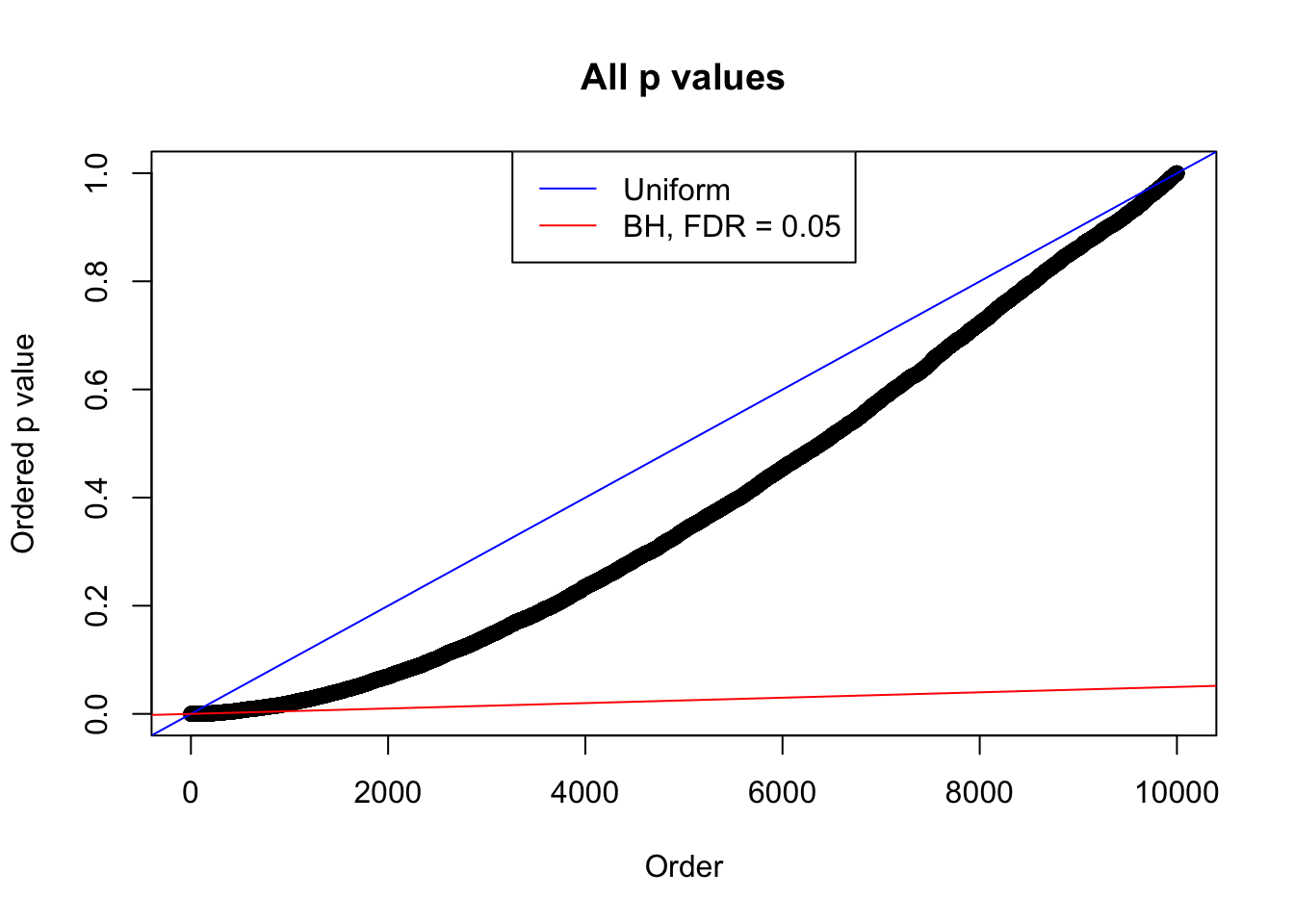

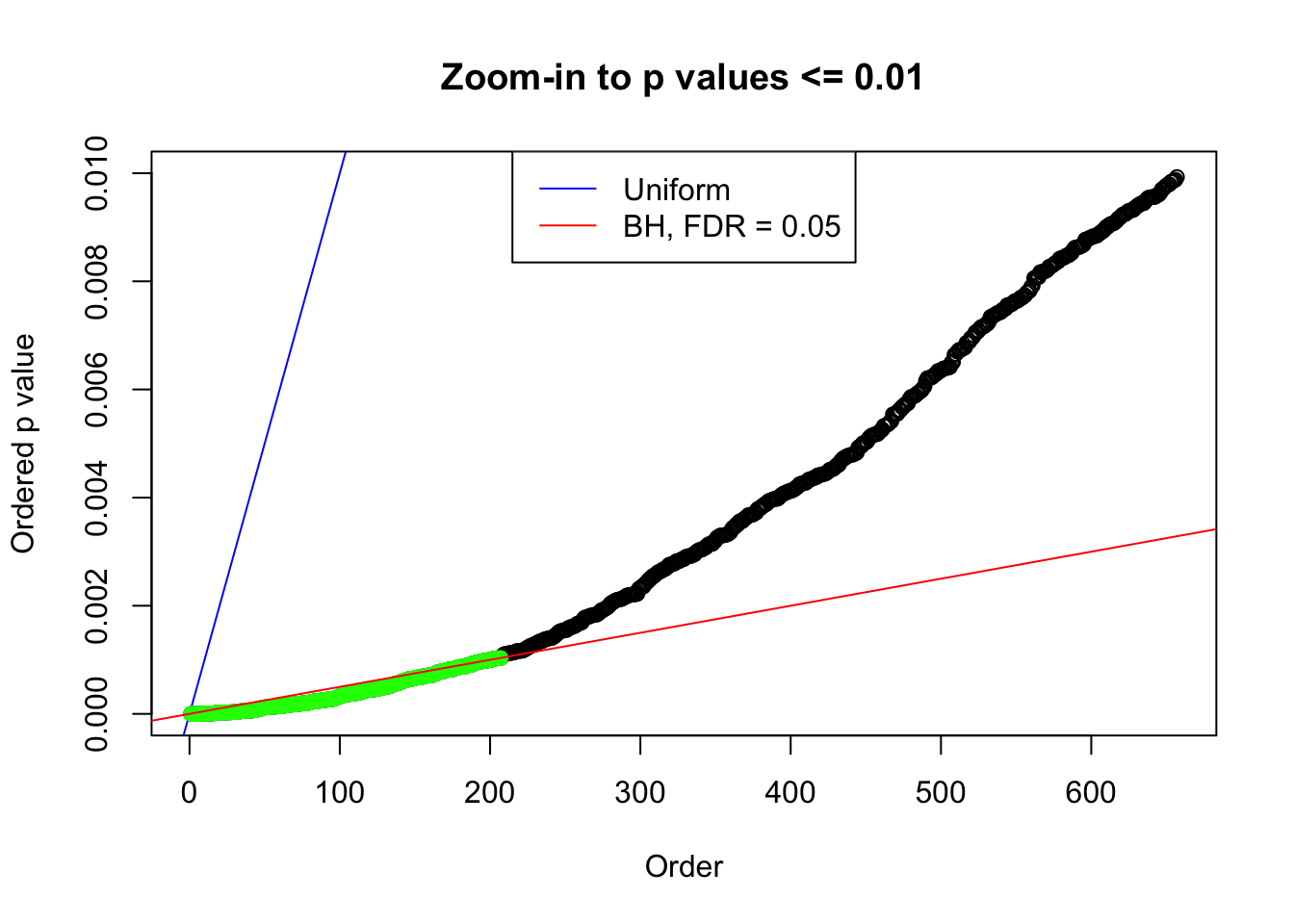

Number of Discoveries: 210 ; pihat0 = 0.3484933
Log-likelihood with N(0, 2): -17695.54
Log-likelihood with Gaussian Derivatives: -17691.84
Log-likelihood ratio between true N(0, 2) and fitted Gaussian derivatives: -3.698983
Normalized weights:
1 : -0.00662167797406594 ; 2 : 0.716277504382886 ; 3 : -0.0310338589748257 ; 4 : 0.594319021051848 ; 5 : -0.00405607696274195 ; 6 : 0.364148970093227 ; 7 : 0.0347791611900783 ; 8 : 0.0862488827136366 ;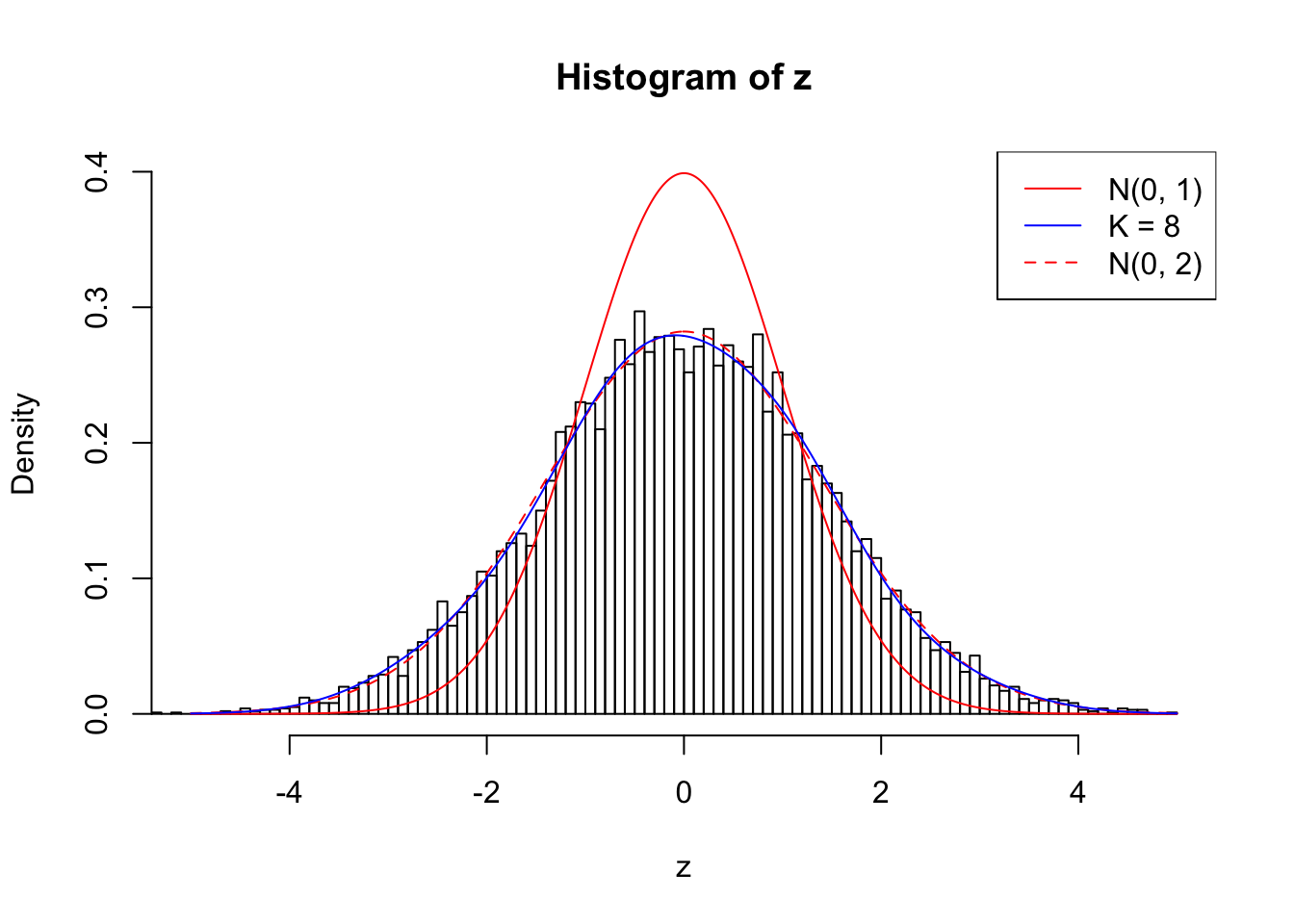
Zoom in to the left tails:
Zoom in to the right tails: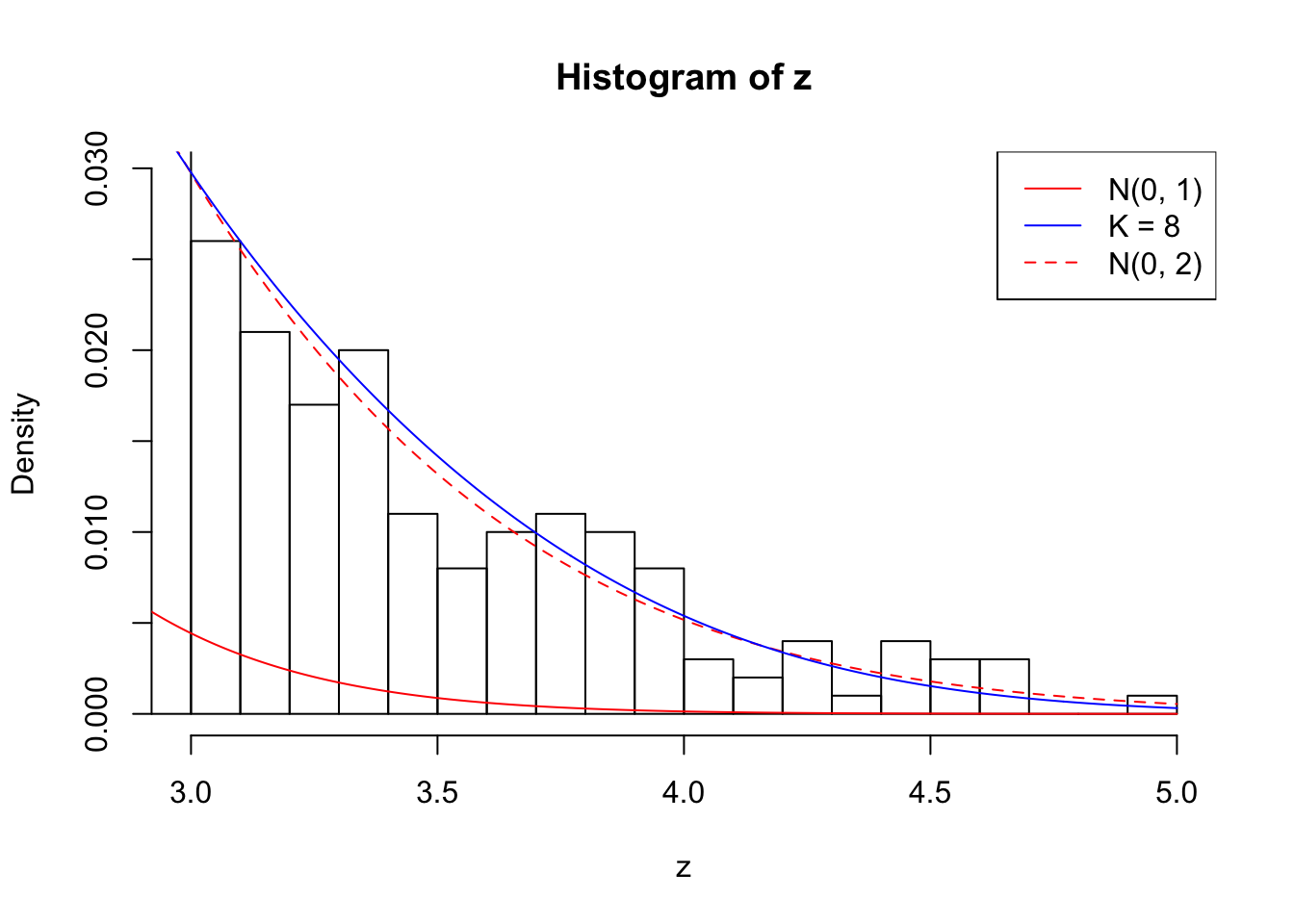

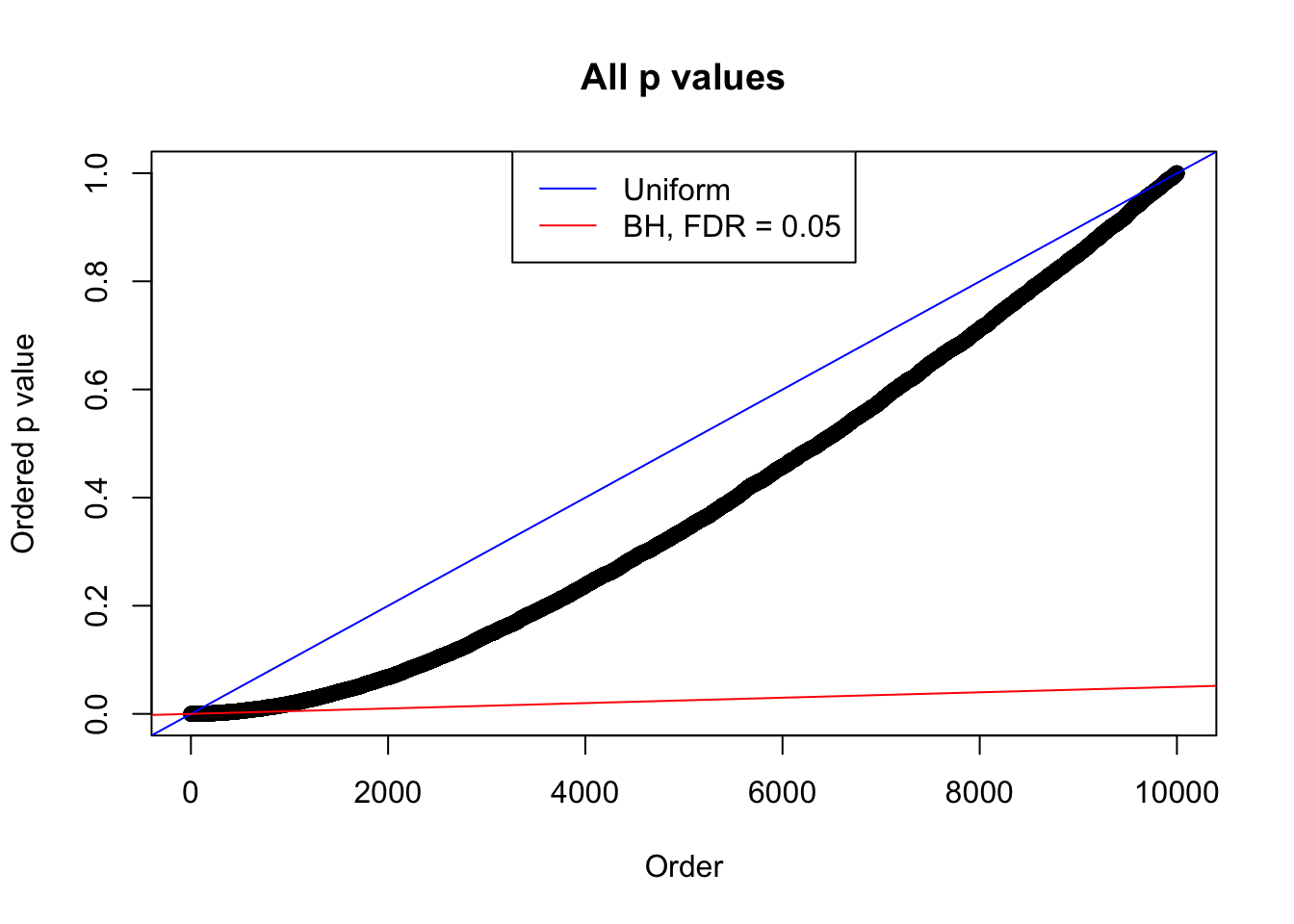

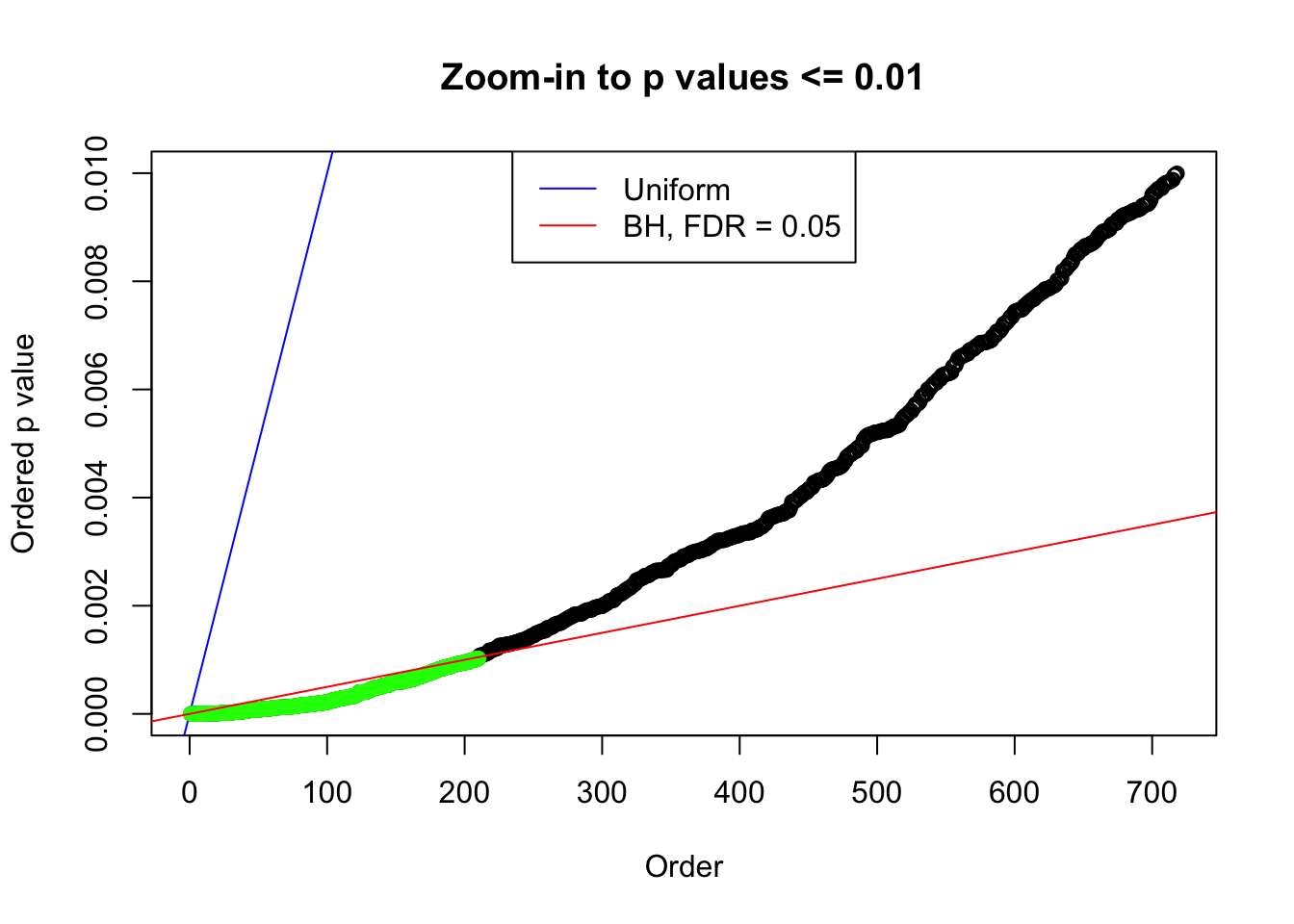
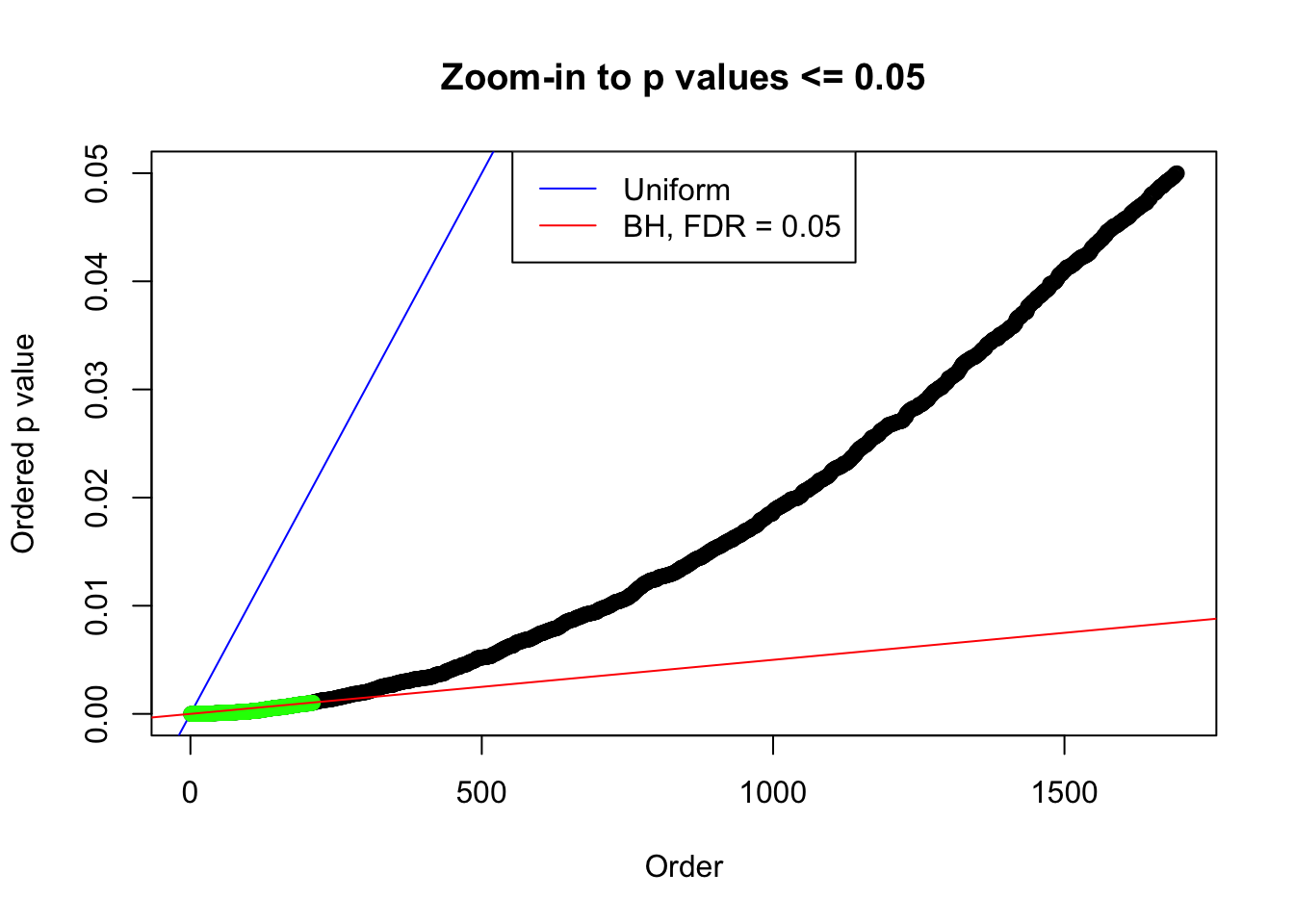
Number of Discoveries: 190 ; pihat0 = 0.3438938
Log-likelihood with N(0, 2): -17620.41
Log-likelihood with Gaussian Derivatives: -17620.47
Log-likelihood ratio between true N(0, 2) and fitted Gaussian derivatives: 0.05853415
Normalized weights:
1 : 0.00412988146644346 ; 2 : 0.691757356275142 ; 3 : 0.0624186506260473 ; 4 : 0.566017599686127 ; 5 : 0.0720236790272216 ; 6 : 0.359005476183793 ; 7 : 0.0491535934289797 ; 8 : 0.11765212650001 ;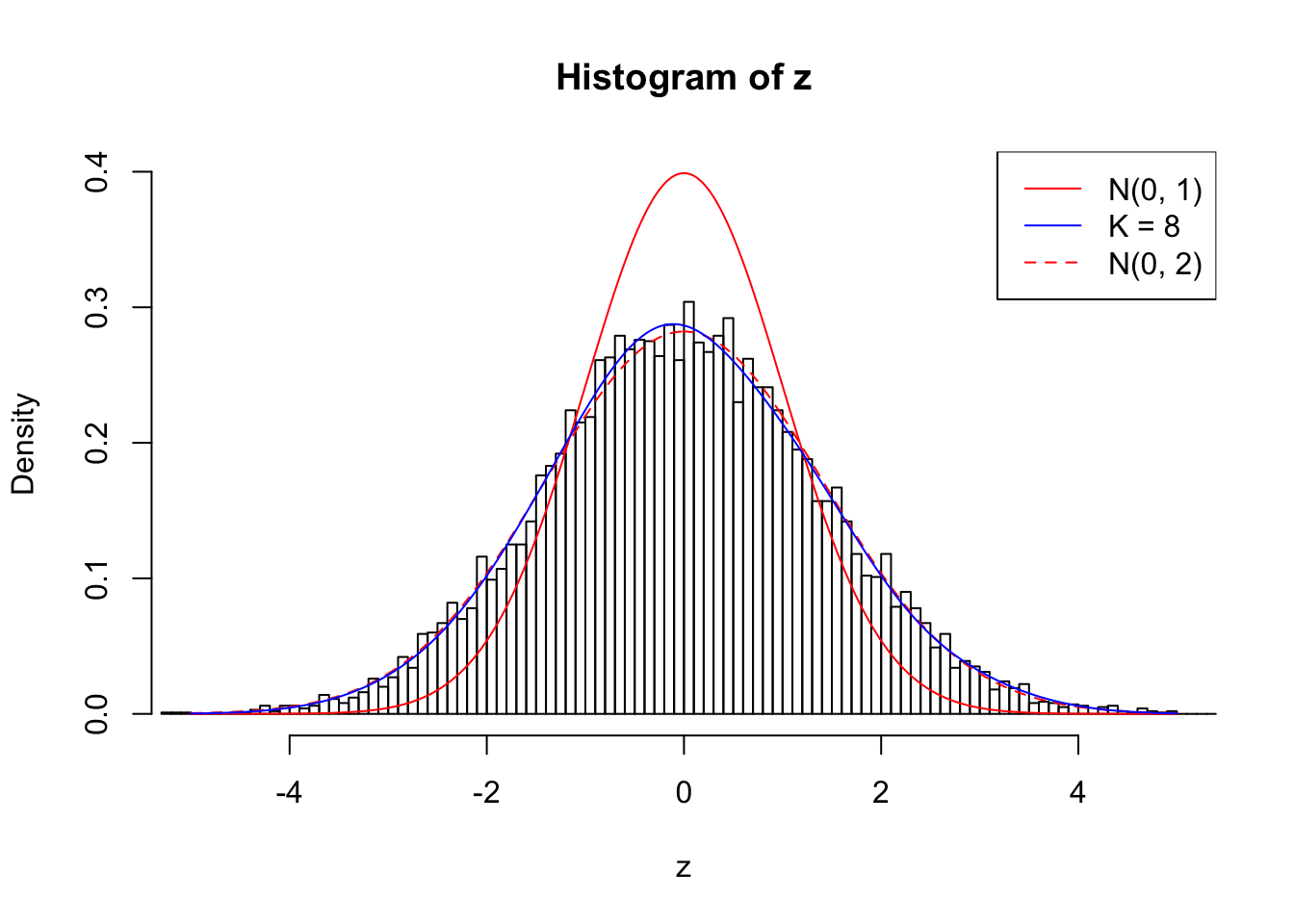
Zoom in to the left tails:
Zoom in to the right tails: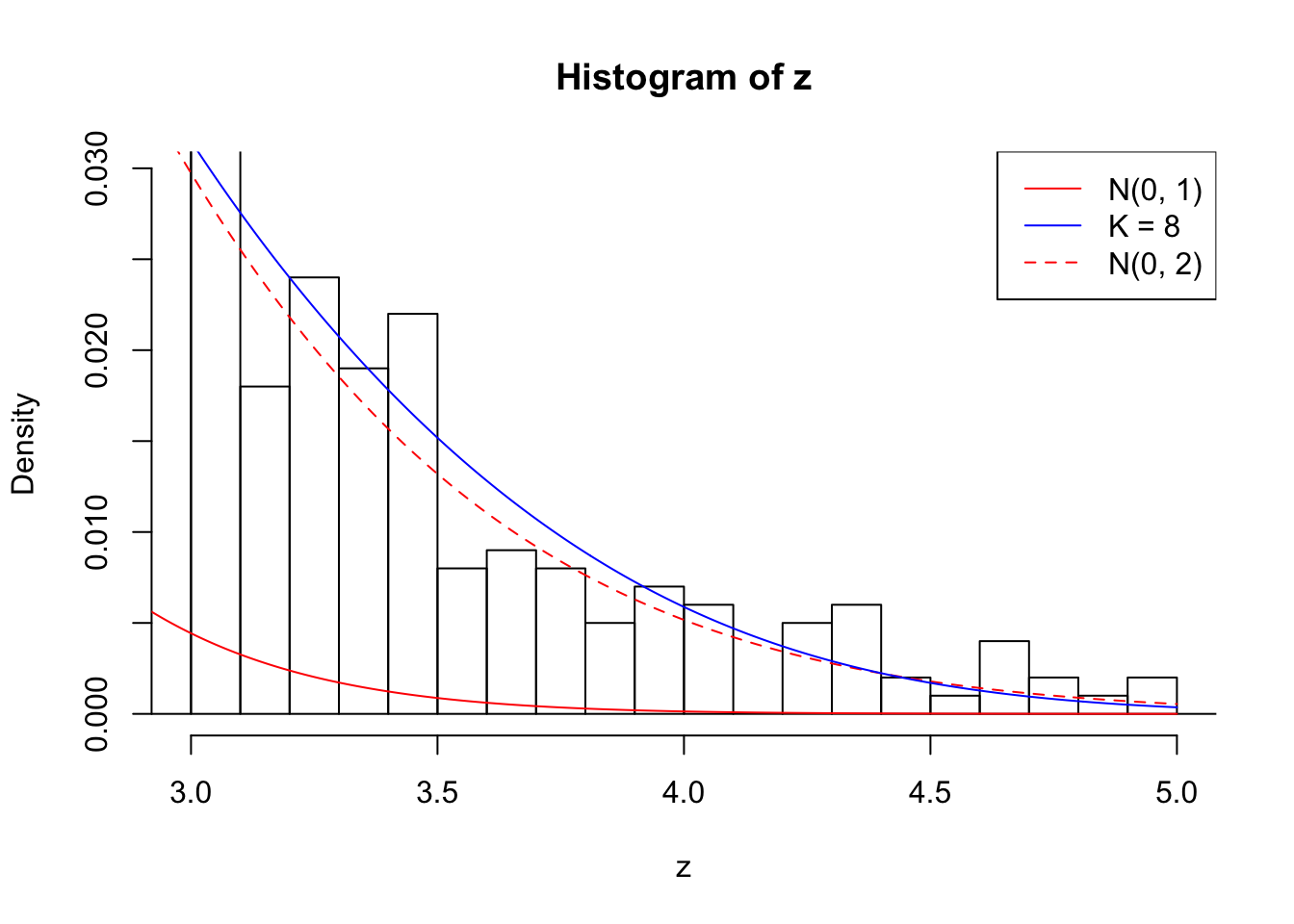
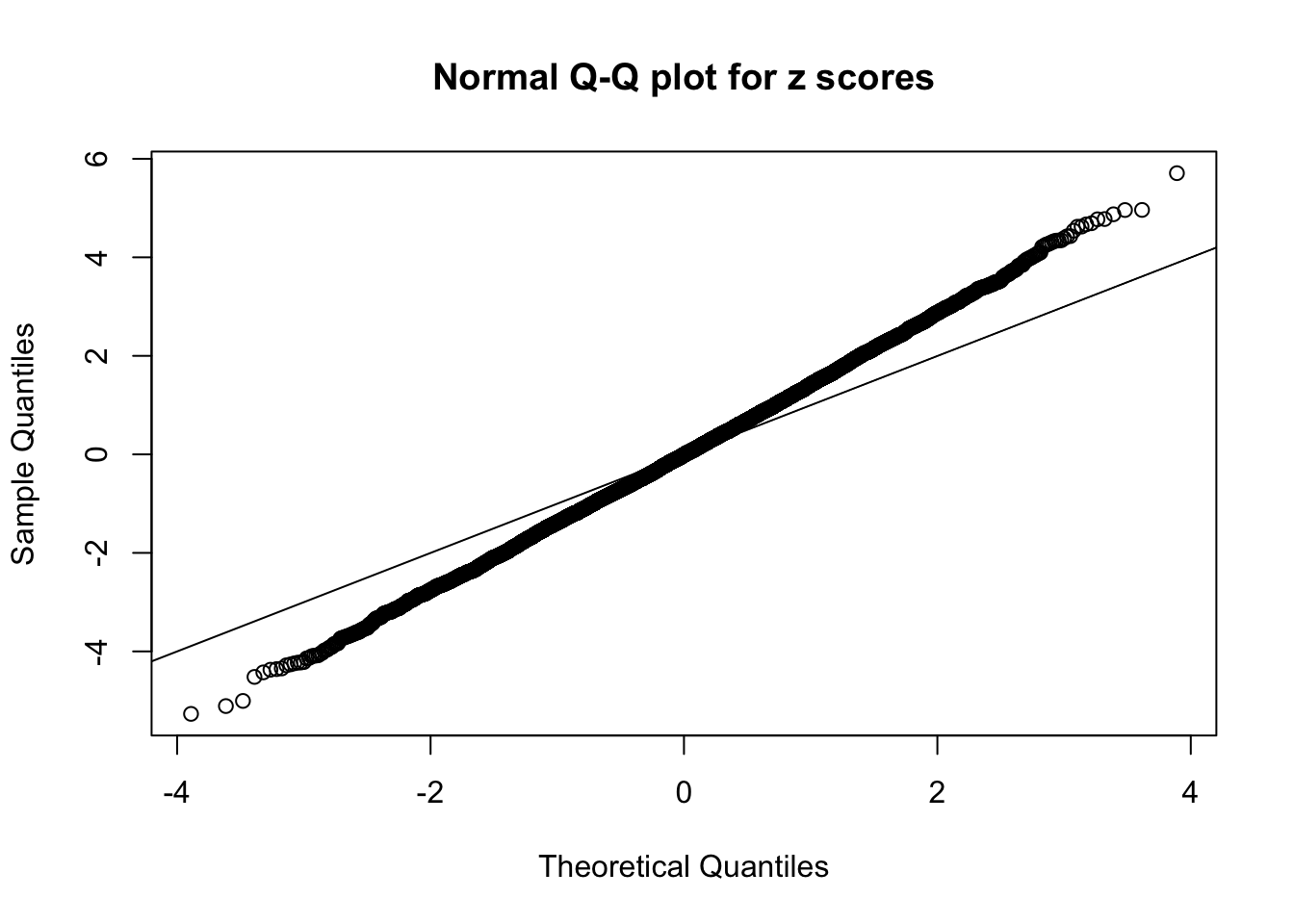
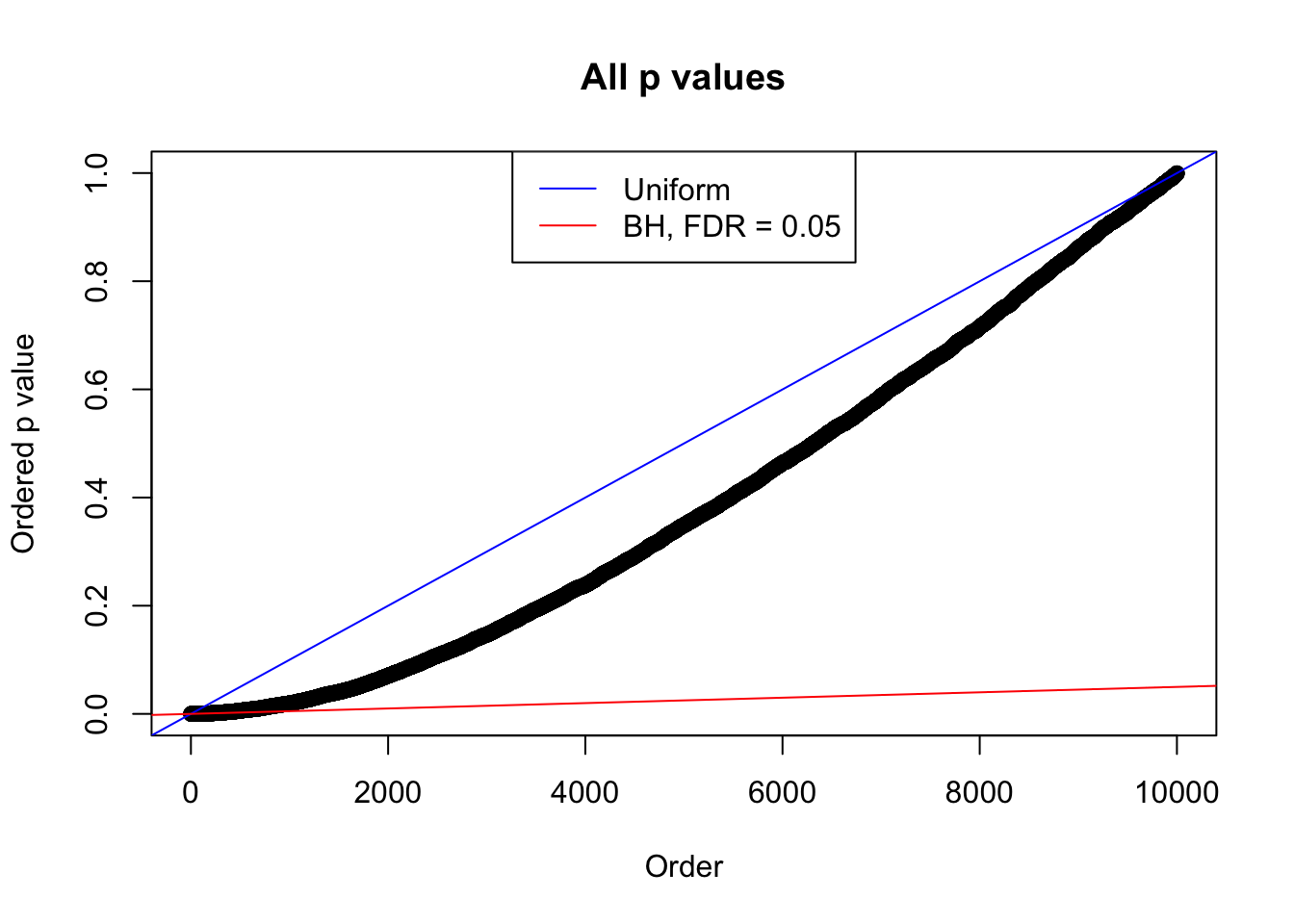
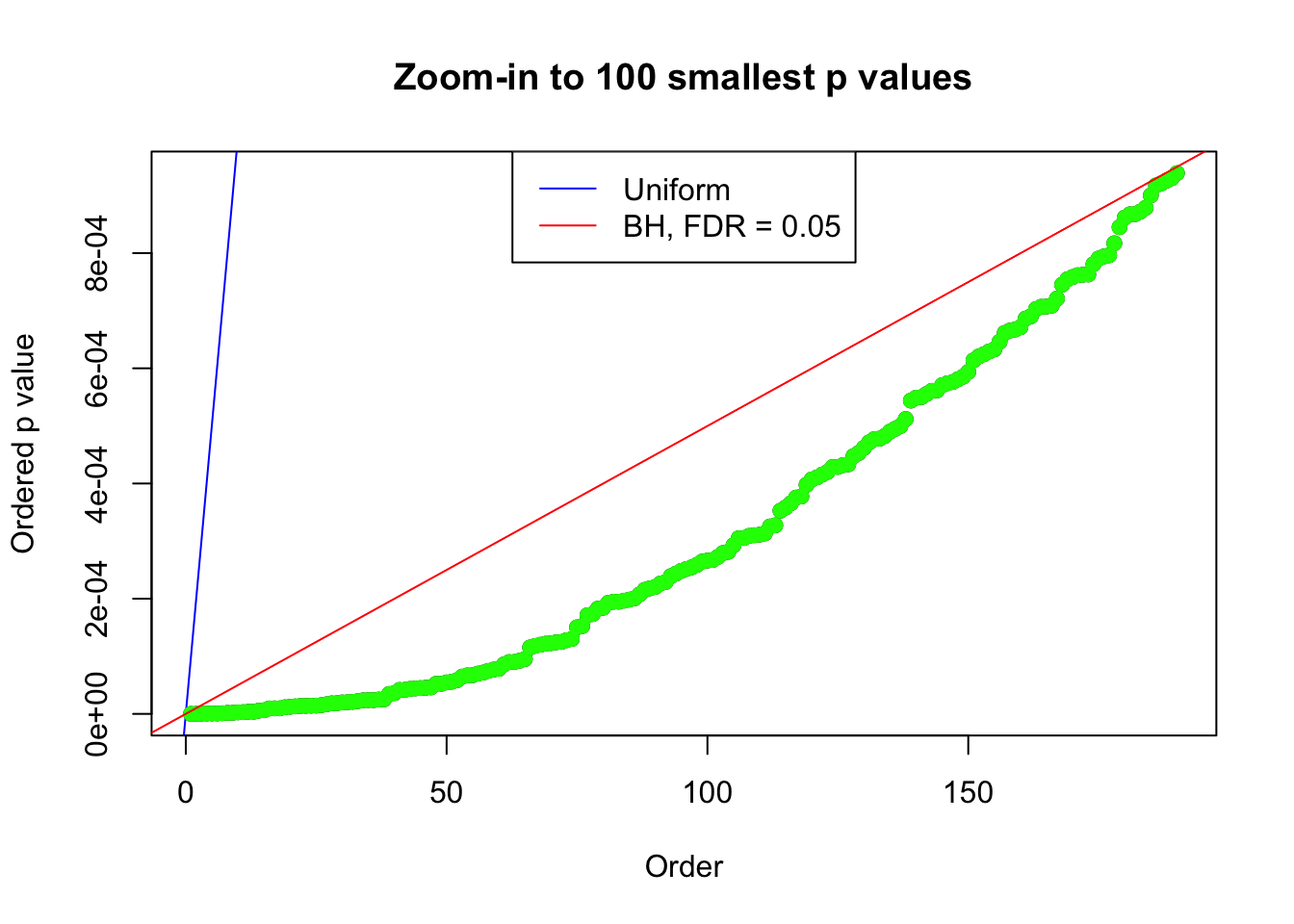

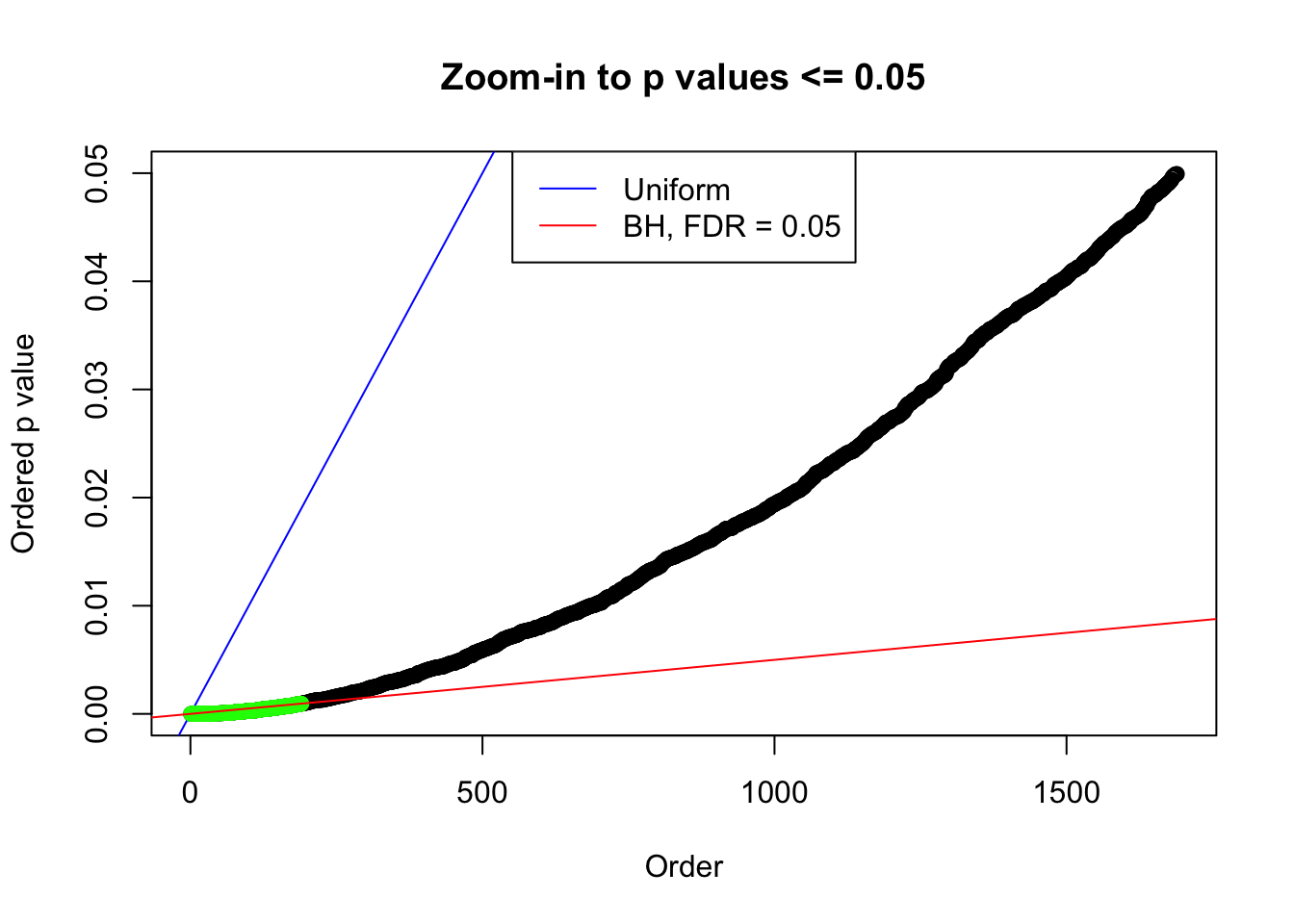
Session information
sessionInfo()R version 3.3.2 (2016-10-31)
Platform: x86_64-apple-darwin13.4.0 (64-bit)
Running under: macOS Sierra 10.12.3
locale:
[1] en_US.UTF-8/en_US.UTF-8/en_US.UTF-8/C/en_US.UTF-8/en_US.UTF-8
attached base packages:
[1] stats graphics grDevices utils datasets methods base
loaded via a namespace (and not attached):
[1] backports_1.0.5 magrittr_1.5 rprojroot_1.2 tools_3.3.2
[5] htmltools_0.3.5 yaml_2.1.14 Rcpp_0.12.10 stringi_1.1.2
[9] rmarkdown_1.3 knitr_1.15.1 stringr_1.1.0 digest_0.6.9
[13] evaluate_0.10 This R Markdown site was created with workflowr